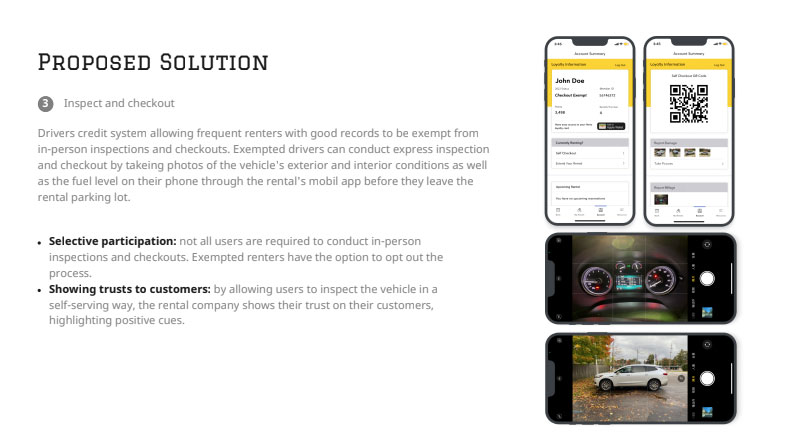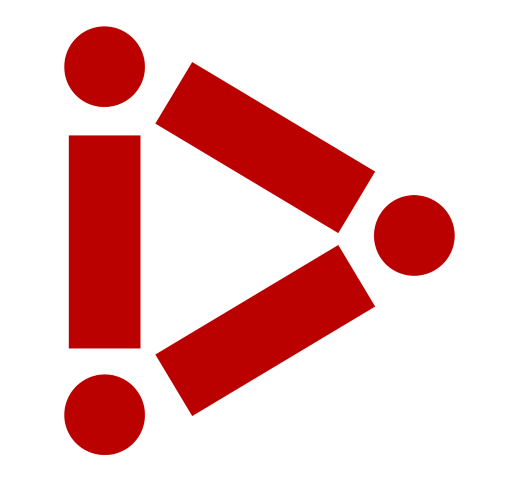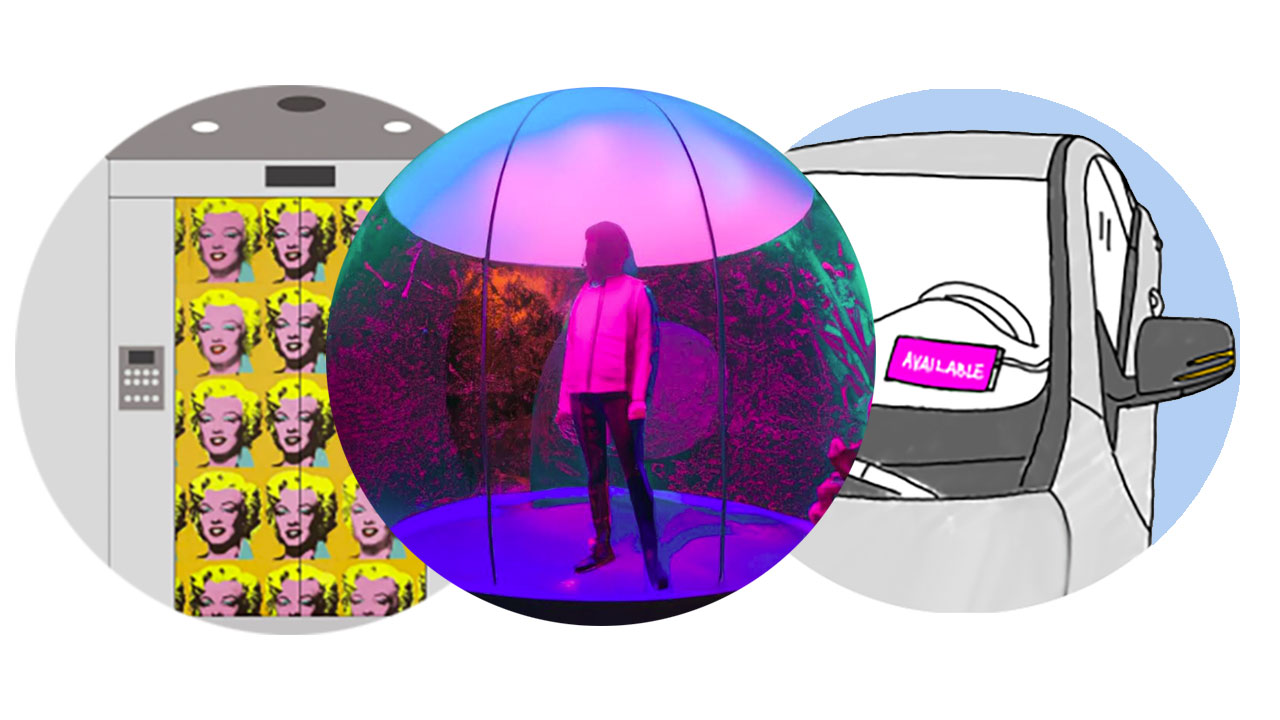
MIIPS Students Present Final Projects for Experience Innovation class
Explore highlights from select pitch presentations
By Phil Geist
Throughout the fall semester, students in Susanna Zlotnikov's Experience Innovation course explored how products and services impact the quality of the human experience and meet human needs. In a culminating project, each student carried out research on an existing experience of their choosing to deliver recommendations to innovate that experience. Students were expected to go deep into a single topic area to analyze the current experience and complete a full design cycle. The goal of the project was for students to create an innovative solution that links four aspects of the experience and ultimately understand how to shape design decisions based on thorough exploration of what drives people’s needs and motivations.
Pitch Presentations
The assignment consisted of three deliverables, which were: a process book, a concept model, and a three minute presentation pitch to the class. Students were evaluated on the clarity of their concept, whether or not their content held the audience's attention by executing an engaging narrative, and overall preparedness and concision.
Explore select student projects below:
Megan Dado, enhancing the guest experience at the Andy Warhol Museum.
Myria Mathew, designing solutions to make mental health treatment a more user-friendly experience.
Tianyang Lei, exploring and reimagining the experience of the car rental industry.
Megan Dado

iii: When was your "eureka" moment for this assignment? What I mean by that is, when did the light bulb go off in your mind when you realized "I can re-imagine this existing experience in a more innovative way"?
Megan Dado (MIIPS '23): My "eureka" moment came when I went to the museum to perform observations on the visitors. I had been to the museum before and had my own opinions on my experiences with the areas, but by focusing on other people's expressions, body mannerisms, and movements, I was able to learn about so many other moments beyond the ones I experienced, which inspired me to do my best to improve them.
For instance, I recognized how close most of the people visiting had to get to the wall in order to read the timeline display, how the shorter visitors had to crank their necks up to read the upper sections of text, and how crowding in the areas led to people getting frustrated and skipping a section all together. I also observed that younger people lost interest in the timeline displays as they went through the museum, as was evident by the dwindling crowd levels and the types of people who were still taking time to read the displays. These observations drove me to pursue opportunities that I hoped would lead to a better overall experience for the visitor.
iii: What did you learn while completing this project?
Megan Dado (MIIPS '23): I learned about what it takes to plan, execute, and communicate an experience improvement on my own.
 "This project pushed me to be diligent on my own time management skills and how I approached solutions that were based on real consumer needs."
"This project pushed me to be diligent on my own time management skills and how I approached solutions that were based on real consumer needs."
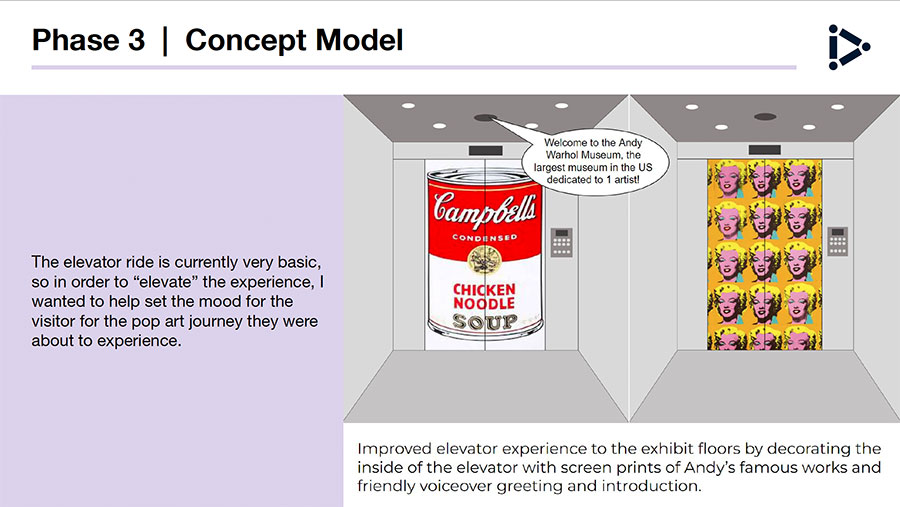
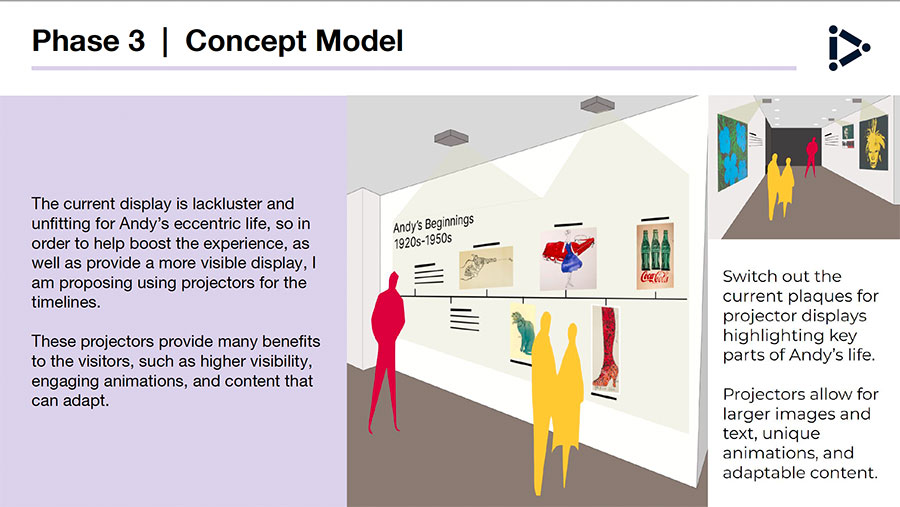
Myria Mathew
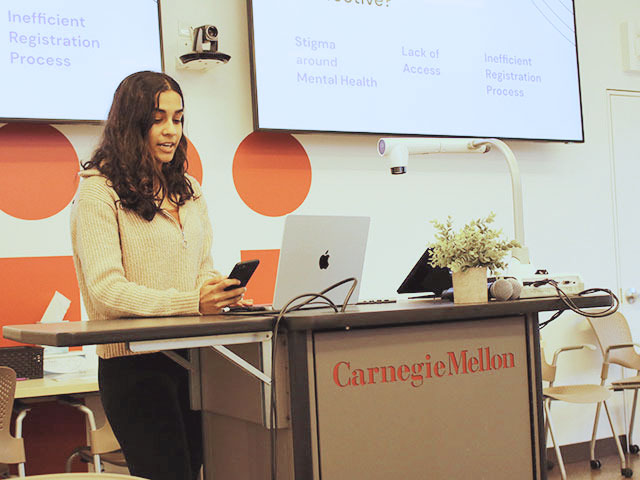
iii: Can you tell me more about the discovery mood sphere?
Myria Mathew (MIIPS '23): The central idea was to have a spherical half dome with LED lights on the interior and exterior while having an info screen. The user enters the dome and faces the screen, where they check in and select their mood. Based on the mood & color selected, the dome changes color on the inside and the outside of the sphere reflects the summation of all the different colors chosen by everyone who has selected their mood for the day. The changing color of the outside of the sphere is meant to draw more people to the exhibit/kiosk.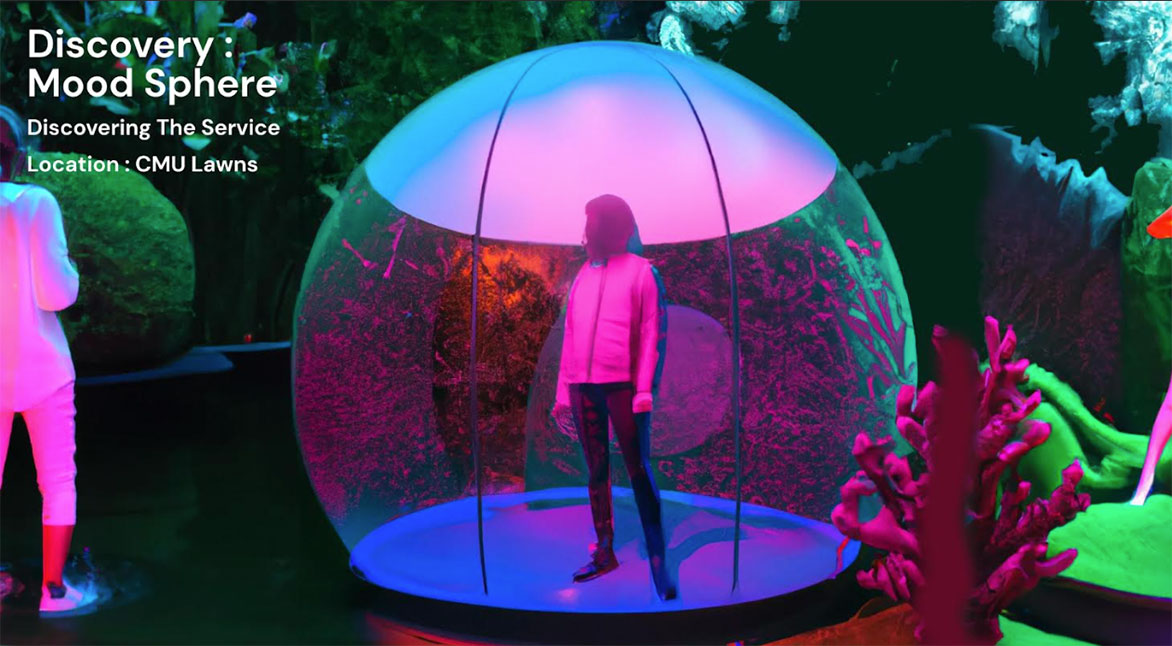
iii: What kind of research did you complete to make this project a more unique experience for your target audience?
Myria Mathew (MIIPS '23): Designing for the Mental Health domain has been a challenge that has intrigued me for several years. Having seen people around me and having dealt with similar problems in the past, the problem was one that resonated with me deeply.
When I shared with several other students at CMU the project that I was working on, people started reaching out to me to share their personal experiences with the Psychological Services at CMU. Reaching out to and engaging with potential users was the most enriching part of the process for me and those conversations helped me uncover what people actually value in a service such as this one.
My research was both data focused and emotion focused. With a mental health service, users are often in a fragile state of mind, and the solution needed to revolve around this factor. In these fragile states of mind, the likelihood of users reaching out to the service for help is low, and the solution needed to factor that in. The goal of redesigning the service was to ensure a positive experience and that students were motivated to re-engage with the service when necessary.
I was able to map out four key touch points that impacted the experience the most and these were the ones I chose to design for. Discovery of the service, understanding what is available to students and Scheduling Sessions with CaPS stood out as key touch-points in the overall experience.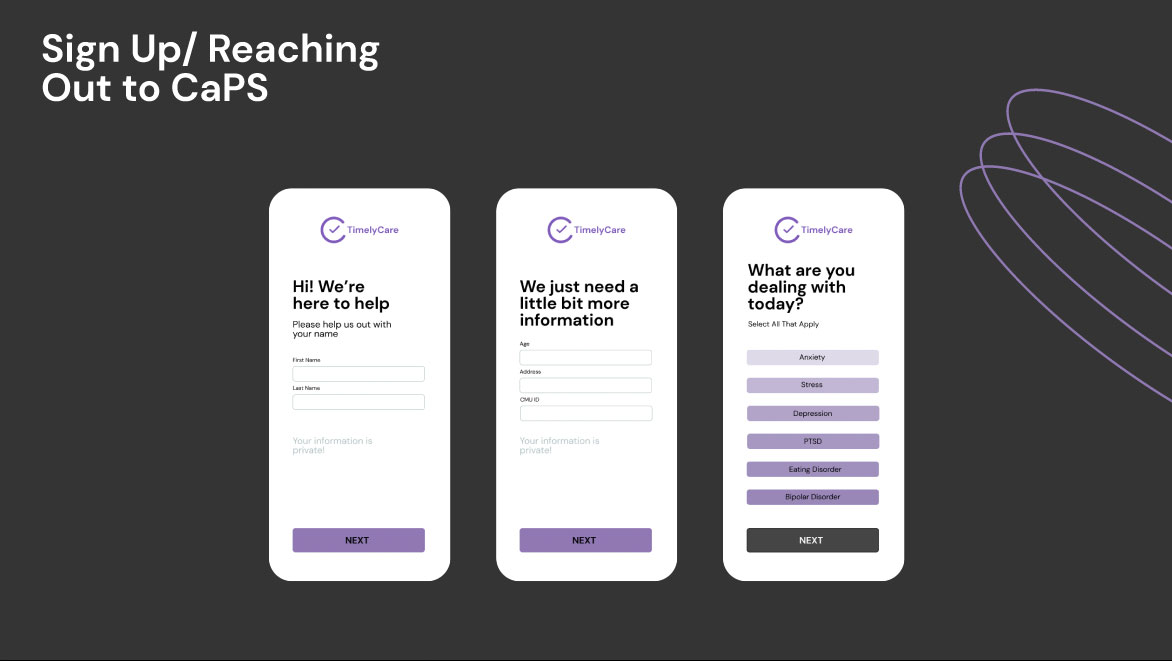
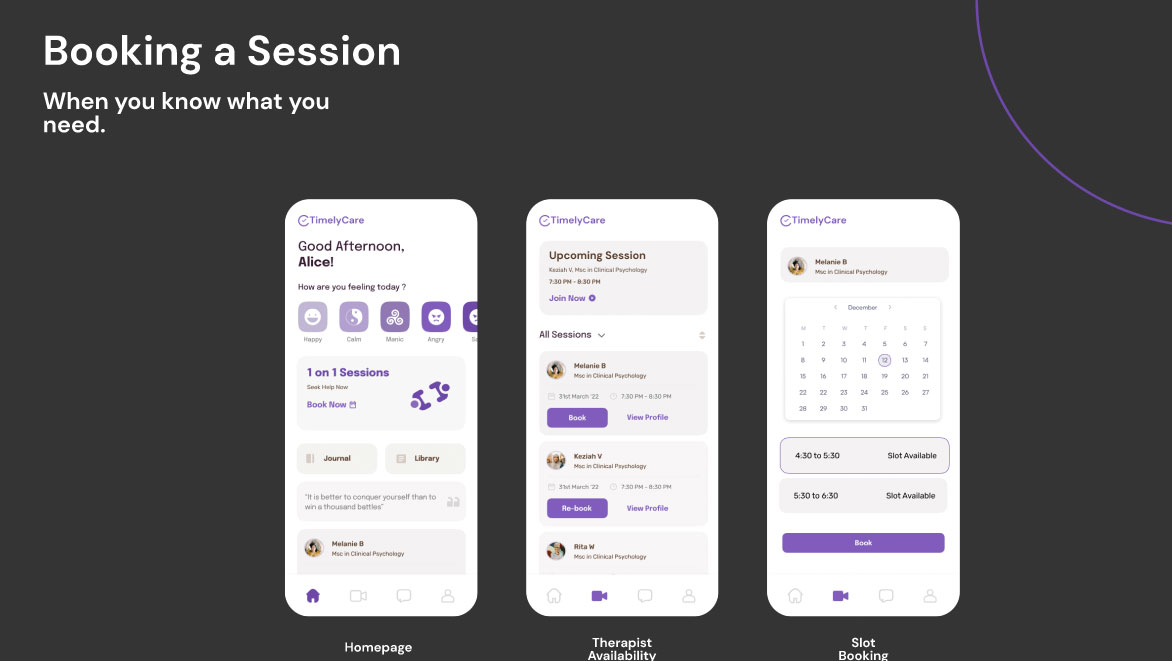
iii: What does it mean for you, to create meaningful opportunities for others to better understand the importance of mental health? How do you wish to enhance the design and usability of mental health service platforms?
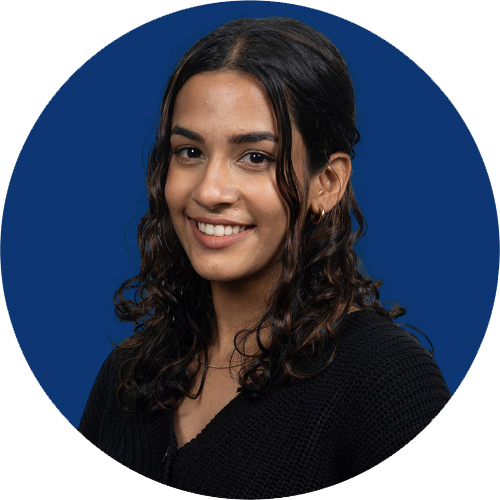 "To me diversity and equity in design is a core motivation in the work that I do. Designing for people means accounting for the things they want to accomplish, but also reflecting their motivations, values, and ways of thinking and feeling."
"To me diversity and equity in design is a core motivation in the work that I do. Designing for people means accounting for the things they want to accomplish, but also reflecting their motivations, values, and ways of thinking and feeling."
Myria Mathew (MIIPS '23): In the design world, accessible and inclusive design usually refers to designing for users with physiological challenges, but rarely takes into account psychological challenges. For instance, depression actually affects contrast perception; for affected users, the world truly appears grey. As the global mental health crisis deepens, more attention is being paid to designing solutions in this domain. Creating opportunities for mental health to be discussed more openly and creating platforms where people can seek help is a growing need, and one that I aim to address with my work.
Tianyang Lei
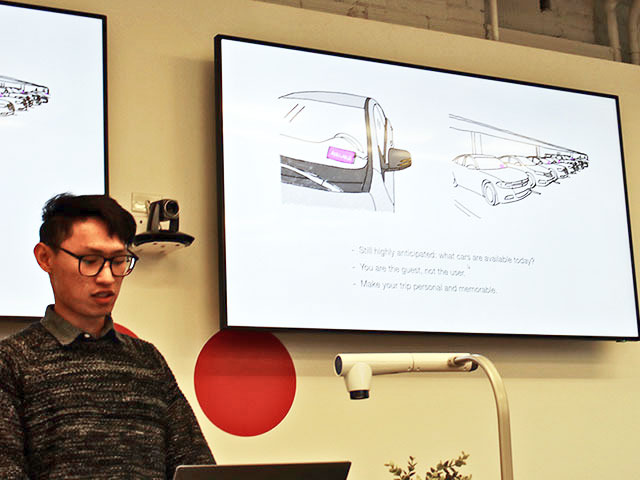
iii: What led you to decide which experience to re-imagine for this project?
Tianyang Lei (MIIPS '22): Determining the experience that I wanted to re-invent on a high level wasn't hard for me at the beginning. I enjoy traveling and backpacking a lot so I've gone through the car rental process quite a few times and I've always felt it could be improved somehow. Although, when it came down to identifying the touchpoints to intervene, I met a few obstacles since there were so many internal and external factors contributing to the experience.
After having a few conversations with my colleagues as well as Professor Zlotnikov I was able to abstract insights and gather information to create a user's journey map. The journey map spanned across all three major user groups of the industry and it helped me identify the touchpoint quickly. After that step everything went smoothly.
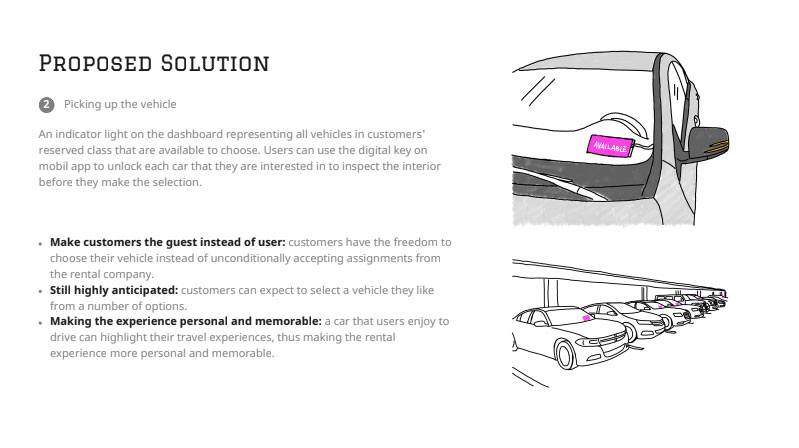
iii: What did you learn while completing this project?
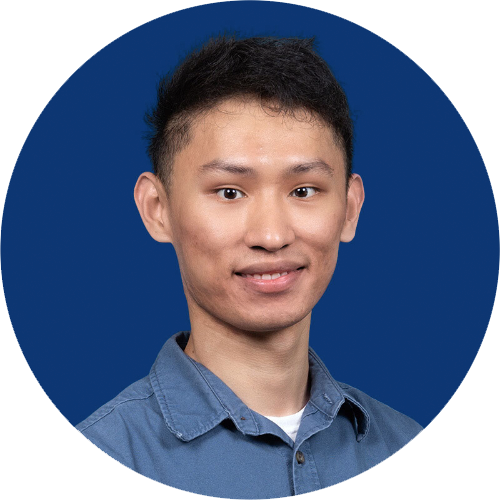 "This project taught me how to deal with unquantifiable information and how to extract common patterns from a wide range of subjective feedback."
"This project taught me how to deal with unquantifiable information and how to extract common patterns from a wide range of subjective feedback."
iii: What kind of research did you complete to make this project a more unique experience for your target audience?
Tianyang Lei (MIIPS '22): I did desktop research, interviews, and even went through the rental process myself during the development of this project.
Desktop research helped me to understand the mechanism behind the scenes so I was able to obtain a better understanding of how the industry works and where the limitations are. User interviews helped me to understand the issues that other renters may face during this process because people rent for different reasons and I can't foresee every single case scenario. Going through the process myself was especially helpful because I got to experience the process first hand. Although I have rented many times before, I wasn't paying close attention to every detail. By perceiving with a purpose in mind, I was able to observe more details.
iii: What does it mean for you, to create a more user-friendly experience in the car rental industry?
Tianyang Lei (MIIPS '22): I enjoy creating something that would help people to step out of their comfort zone and make the traveling process a little easier for them. I hope it would encourage people to get out there and explore new places more often. When I look back on my backpacking experiences in different countries around the world, sometimes I'm just amazed by how much the traveling experiences can be changed by innovative products such as Google Maps and Lonely Planet.
If these products and services never existed, I never would have been able to travel to as many places and see as many different things that I have, which has ultimately shaped who I am.
